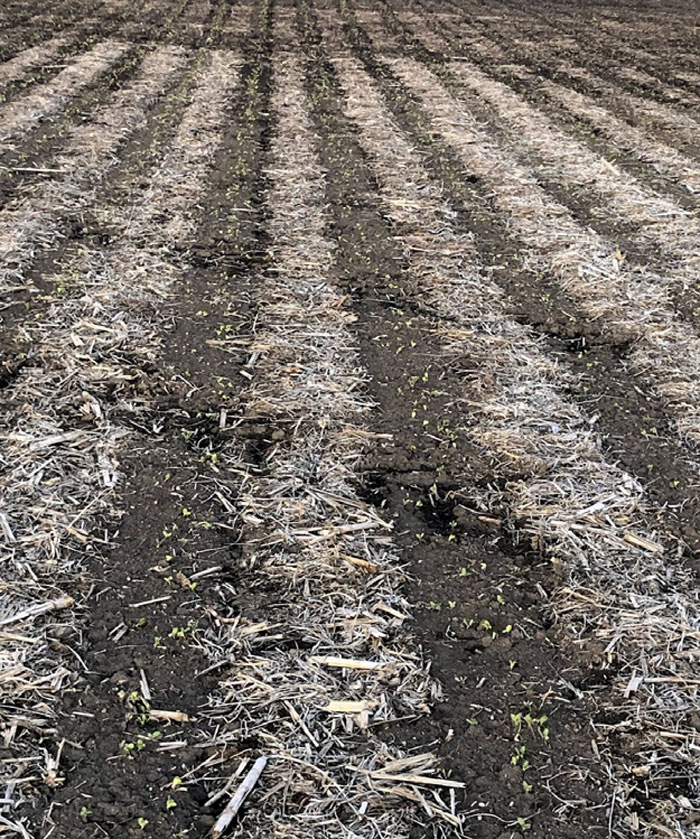Strip-till soybean acreage increased in 2022, according to the 10th annual Strip-Till Farmer Benchmark Study (see p. 18 for in-depth analysis), with survey respondents strip-tilling an average of 586 acres of soybeans. For more perspective, we asked farmers participating in the Strip-Till Farmer email discussion group if they strip-till soybeans. Here are some of the top responses gathered.
Brent Brueland (Boone, Iowa): I encourage everyone to try strip-tilling soybeans on at least a few acres no matter what strip-till system you run. My cousins in north-central Iowa plant all their soybeans with their strip-till rig. They use a coulter-only system and have equivalent yields with lower seeding rates.
They use 30-inch rows, but the seeds spread about 4-6 inches wide in the strip. There end up being about 22 inches between the outer-edge plants between 2 rows of soybeans instead of 30 inches — making it almost like planting narrow rows as far as seed spacing and inter-plant competition go. They applied AMS and some other commercial fertilizers in the same pass and have shown yield bumps from those as well.

Brent Brueland’s strip-tilled soybeans emerged early in north-central Iowa. Photo by: Brent Brueland
Matt Tiffany (Redwood Falls, Minn.): We completely moved away from strip-till and are now no-tilling everything on our farm. I strip-till for my neighbor, which provides a great check to see if our no-till system is performing like our strip-till system did. We currently band our corn fertilizer with Yetter Magnum fertilizer coulters in the fall. It gives us the benefit of banding our nutrients but with less disturbance and more efficiencies. We have been no-tilling soybeans for 5 years with about half of them into cereal rye. One of the biggest benefits of moving to no-till is being able to grow cereal rye that we process and sell as cover crop seed.
Matthew Kruse (Des Moines, Iowa): I like the idea of strip-tilling soybeans to help warm the soil and get an earlier start, but I couldn’t justify the higher cost of adding more fertilizer. Perhaps if fertilizer costs continue to drop, it would make more sense for our operation to strip-till soybeans in the future.
Join the Discussion!
Click here to sign up for the Strip-Till Farmer email discussion group. Join in on the conversation, share information, and connect with other strip-tillers who share your interests and challenges.
Bryan Ryberg (Buffalo Lake, Minn.): We have gone away from strip-tilling soybeans because we don’t need fertility for them. This year, we purchased a John Deere no-till drill, and we’re seeding soybeans into vertical-tilled (VT) stalks that were all seeded with rye last fall. We hope to try drilling rye in the fall to act as a VT and then plant soybeans with it again in spring 2024. I’ve heard of some guys using their ETS SoilWarrior strip-till machine to actually strip and plant in the spring in the same pass.






